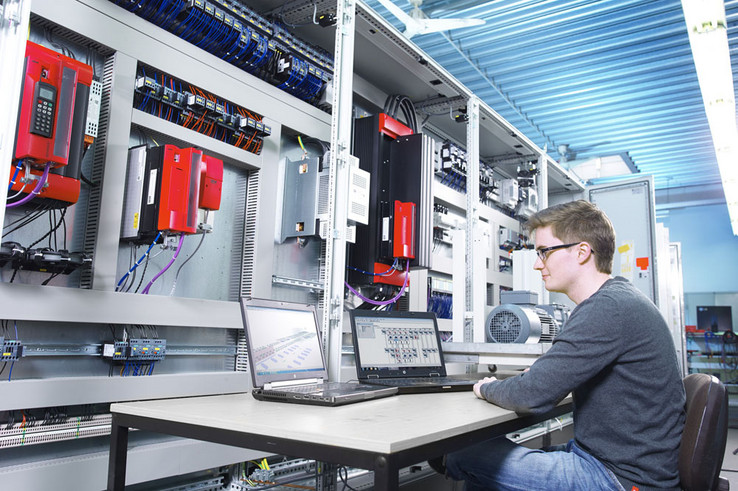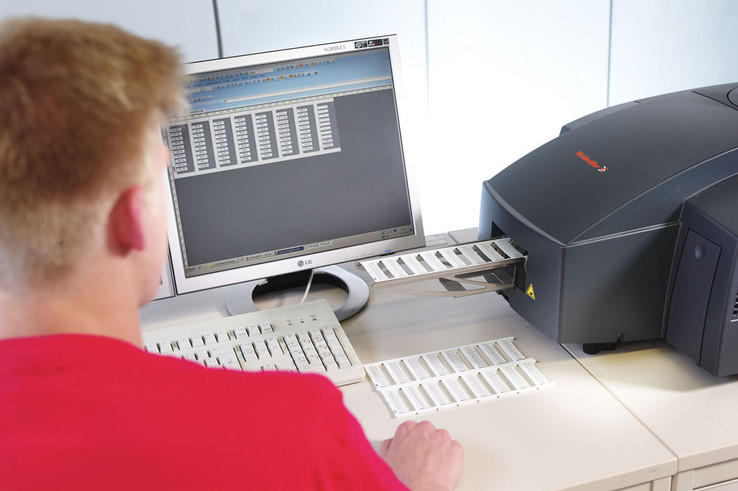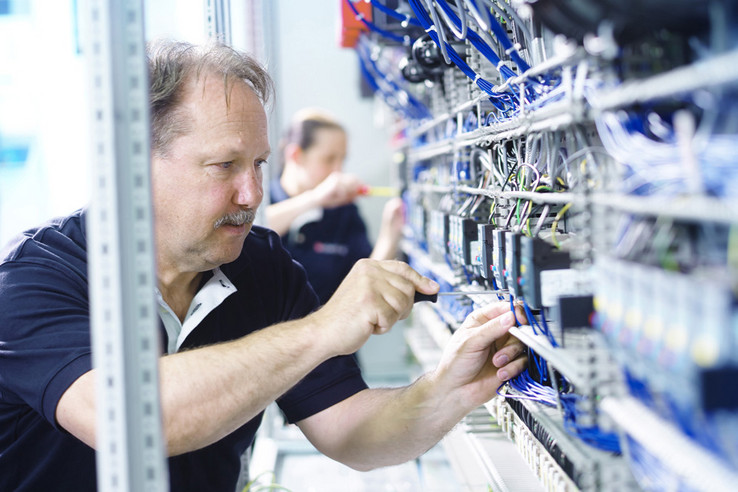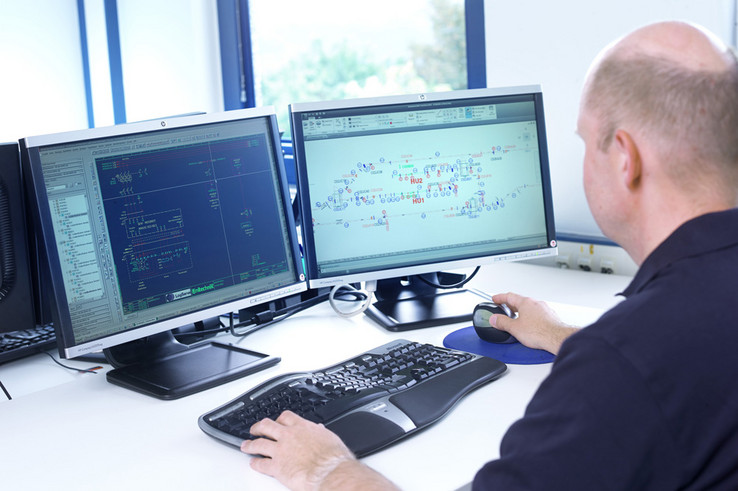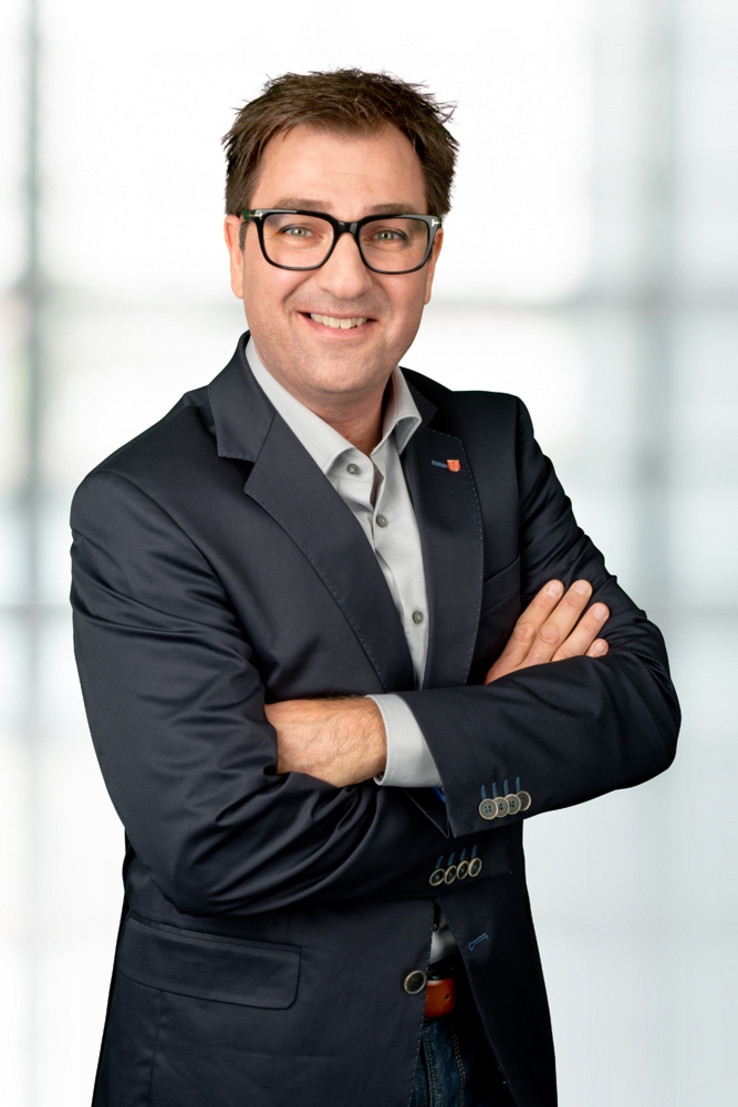Future opportunities for digitalisation in control cabinet construction
On a path to paperless production
Conventional control cabinet construction, both for series and one-off production, involves many manual work steps making the process both time-consuming and costly. End-to-end digitalisation along the entire value chain is however a solution that promises to increase productivity along with flexibility and transparency. Fully digitalised process flows increase efficiency in production and planning by almost 40 percent.
The goal in control cabinet construction is to connect the various processes with each other and to centrally manage the resulting data for all work steps. To be avoided are media breaks, such as those that occur when new data is entered into other systems or when schematics are issued in paper format. Connected processes mean manufacturers benefit from significantly more efficient processes. Connecting individual work steps such as electrical design in the CAD system and layout planning through to mechanical production, wiring and final testing minimises any effort required for tasks such as the manual transfer of parts list data. Other tasks that can be avoided include multiple manual input of information that is already available from the design department. Such manual tasks not only tie up working time, but also increase the likelihood of errors. When individual process steps are not connected with each other, any changes made to the original order then require implementation in multiple systems.
Outlook and status quo: The digital twin in control cabinet construction
Digital twins significantly increase the benefits in connecting the work steps in control cabinet construction. The twin is created during electrical design and layout planning and then accompanies the entire production process providing the individual departments with the necessary information. What makes a digital twin special is that customers, manufacturers and suppliers all work with the same model. "Device manufacturers such as Siemens, Schneider or SEW, provide EPLAN macros which include all the properties of their products. Our electrical designers insert these devices into their schematics and thus generate a logical version of the model", explains Mathias Terstegen, production manager for control cabinet construction at Unitechnik Systems GmbH. The layout planner then puts the model into a physical form by placing the devices in the virtual enclosure. The finished model includes all dimensions and portrays the individual devices inside in a realistic 3D look. Also included is the complete wiring with all cable routing, ducts and DIN rails (positions and lengths) as well as all holes and cut-outs. The haptic portrayal simplifies much of the work as tasks for the different technical disciplines are easy to identify. Production is then less time-consuming and the likelihood of errors decreases significantly.
Automation of mechanical manufacturing
The data stored in the twin also brings further benefits. Cable duct and DIN rail lengths are generated automatically. Measuring and manual cutting are no longer necessary with an automatic cable duct and DIN rail cutter providing the material for each cabinet. The precision data from the digital twin also delivers high value for other process steps. "Drilling and milling machines get their data from the 3D model for the precise position of drill holes and cut-outs", says Terstegen. Automated plotting and printing stations additionally save personnel the effort of labelling the individual components. Outsourcing terminal strip production is a further example of increased efficiency through digitalised processes. Fully labelled and configured terminal strips can be ordered from suppliers by sending the finished terminal strip from the digital twin to the service provider, who then manufactures it fully automatically. "Such a machine can pay for itself only when large quantities are continuously required", says Terstegen. "Manufacturing companies can therefore decide which machines makes sense to invest in and what can be outsourced". Cables can also be pre-assembled according to requirements.
Paperless production thanks to smart wiring
Smart wiring represents a further step towards paperless production. It enables the entire wiring of the system to be visualised via a digital twin. Printed schematics for the wiring then become a thing of the past with the work instead being done via tablet directly on the 3D model. The digital twin can be used to read out cable lengths, cable routing and terminal points. The system ensures the cable ducts have consistent fill capacities. The digital twin also enables the current processing status to be seen in real time when several departments are working simultaneously on the model. Changes are thus transparent and precisely documented at all times and for all parties involved. "An important aspect for us is that by digitalising processes, we can flexibly integrate changes", says Terstegen. When modifications are made, the electrical designer sees online whether the component in question is already wired, and the change immediately appears on the tablet of the wiring technician. Conversely, the wiring technician may identify an error. The change is then transmitted to the electrical designer in real time.
Interface problems in switchgear engineering
One challenge in transmitting data across companies is the general absence of a standardised interface for the 3D model of a control cabinet. In other industries, such as the building sector, the IFC interface standardises the 3D representation of a building. With Eplan Pro Panel, Eplan gives the option of describing a control cabinet's digital twin in 3D. On the basis of this model, all information required in downstream processes can be provided via standardised interfaces. Customers and service providers can use the data from the digital twin in their own processes. No extra documents are required for the sharing of information.
Flexibility across company boundaries
Working with the digital twin means all those involved are always up to date. The digital twin leads to highly efficient cooperation across companies, between customers and cabinet manufacturers as well as between cabinet manufacturers and their suppliers. The customer also gains by having a good overview of the process and the project's progress. Even the smallest details can be viewed at an instant. This makes agreement easier because issues can be jointly viewed in the model and discussed.
About Unitechnik
Unitechnik Systems GmbH is based in Wiehl and has been one of the leading suppliers of industrial automation and information technology for four decades. The second generation of the family-owned company designs and implements tailor-made systems for internal logistics, cargo facilities and production. Unitechnik operates worldwide as a system integrator and full supplier. Professional project management and support of implemented plants are the basis of long-term business relations and ensure the security of customer investments. Unitechnik clients include well-known companies such as Claas, Dehn, Emirates, Linde, Lindt & Sprüngli, Nobilia, Otto Fuchs, Soennecken and Turck.
Author: Dirk Schütz, head of department and sales for control cabinet engineering at Unitechnik
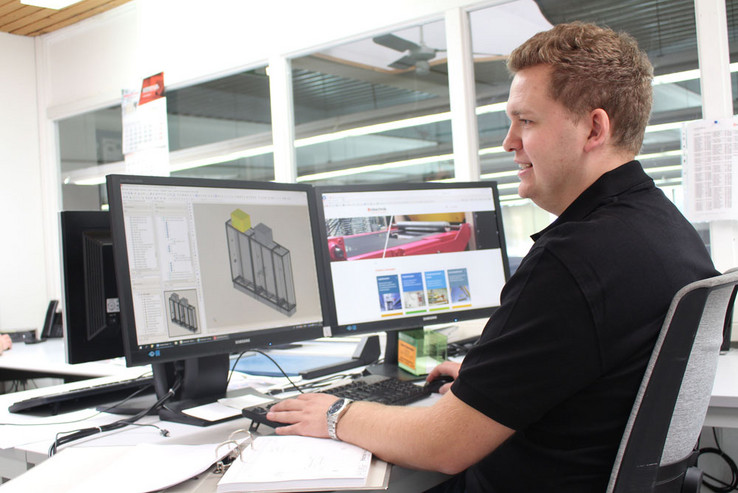
The digital twin accompanies the entire production process and reduces the likelihood of errors. It also plays an important role in functional checks.
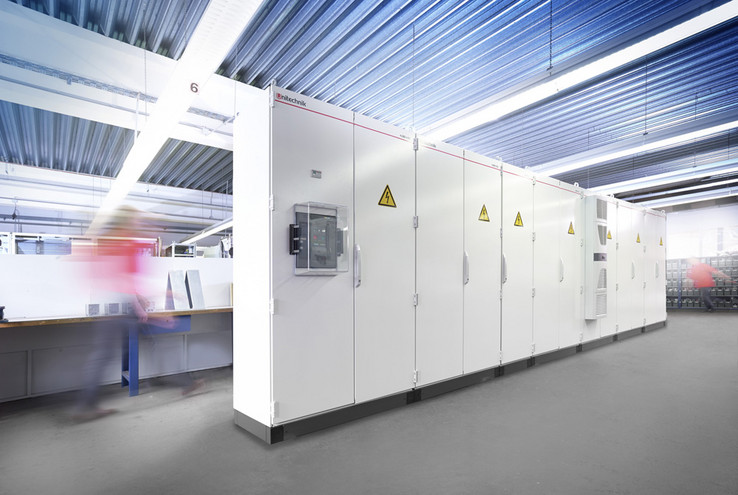
Fully digitalised process flows increase efficiency in production and planning by almost 40 percent. © Unitechnik Systems GmbH



